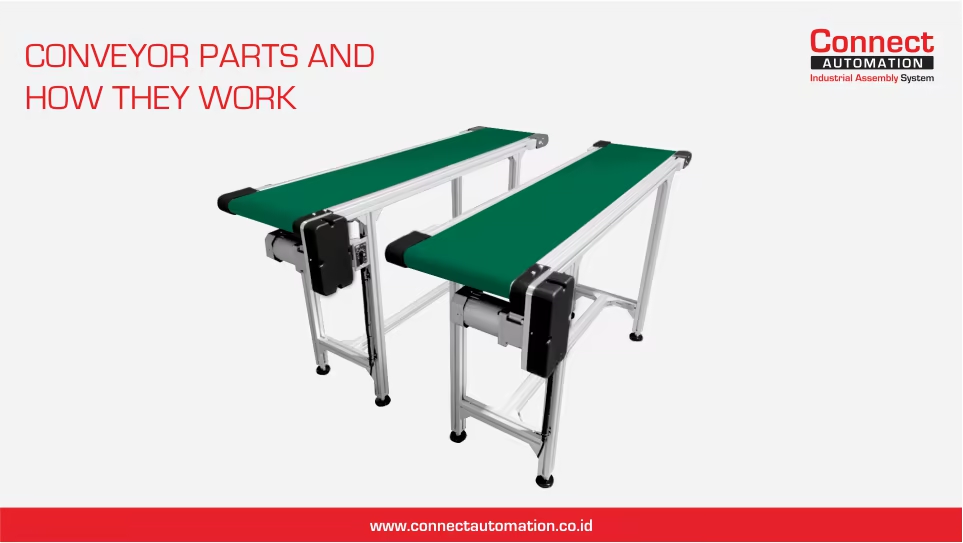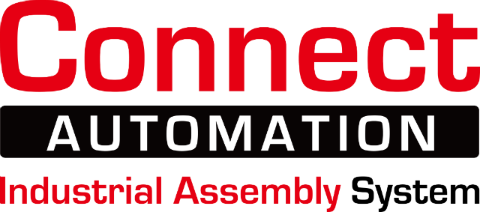Get to Know About Conveyor Parts and How They Work

Conveyors have become the most important part of modern industry. This equipment is usually used to move goods from one point to another efficiently and quickly, this has an impact on saving time, saving money, saving labor, and work safety when production is running. Conveyors are one of the answers to increase productivity in the work environment and ensure time efficiency so that products can be delivered on time. Conveyors can also be used as a tool for packaging facilities, assembling products, to sorting goods. Of the many advantages, this tool is important in the market. Conveyor itself is a tool that functions to move goods from one place to another. The use of conveyors is generally used in industry as a means of transportation of goods that are large in nature, continuous (continuous), heavy, high temperature, require hygiene, so that they cannot be transported by humans. The goods in question are goods resulting from production, or material goods that will enter the machine for the production process. In addition there are several advantages in using a conveyor.
Get to know the Parts of the Conveyor
To get to know the conveyor more, it would be nice to know in advance about the parts of the conveyor. The following are the parts of the conveyor in general and an explanation of their functions
1. Frame Conveyors
The frame or framework is a part of the conveyor that functions as a place to attach and accommodate all conveyor components. The frame on the conveyor is also made of various materials such as stainless steel, aluminum profile, or it can be made of steel
2. Belts
Belt is a belt that functions to carry material or goods transported by the driving machine. Belts usually have various types, such as special belts for the fnb industry, the cosmetic industry, or belts for all products in industrial areas.
3. Idle
Idler is a support that serves to hold the belt. Idlers are located in several parts, such as the idler at the top which has a function as a holder for a loaded belt, the intermediate idler is used to prevent the belt from shifting from its track, the last, the lower idler functions as a hold for an empty belt.
4. Motors
The motor is part of the conveyor which has a function as a source of main motion power. Without a driving motor, the conveyor cannot move goods from one place to another.
5. Pulley rope
Serves as a material carrier and continues the rotary force. The strength of the belt is not seen based on its thickness, but on the number of reinforcing layers (ply) and the tensile stress per ply (Tensile Strength). Judging from the structure of the reinforcing layer.
6. Snub Pulleys
Serves as an enlargement of the contact winding angle between the pulley and the belt. Usually the snub pulley is located near the drive pulley.
7. Internal Belt Cleaner
Equipment that functions as a belt side cleaner from residual material that is not poured out or left behind during loading and remains attached to the side of the belt.
8. Impact Idler
Located in the area where material spills into the Belt. Made of Rubber (rubber) which functions as a barrier to impact loads from material that falls on the Conveyor, so as to reduce Belt damage.
9. Return Idle
Or it can be called a roller supporting the belt in an unladen area which is installed at the bottom of the frame.
10. Bend Pulley
Serves as changing the direction of the belt or turning the direction of the belt. Where the bend pulley works to regulate the balance of the belt on the ballast
11. Take-up Pulley
Its function is used to tighten the belt, so as to maintain the tension of the belt the same between the sides that do not carry material. The take up pulley can also provide tension on the belt during initial start.
12. Take-up Units
A ballast unit used as a counterweight to the belt slack when operating with and without load. With the aim of keeping the conveyor belt tight, the take-up unit will go down if there is no material to carry and rise if there is material to be carried on the conveyor.
13. Feed Chutes
Or it can be called a roller supporting the belt in an unladen area which is installed at the bottom of the frame.
14. Skirt Boards
Serves as a bulkhead that is attached to the right and left of the belt at the place of loading, usually made of metal or iron which can be installed vertically or obliquely which functions to prevent the occurrence of scattered loads.
15. Head Pulleys
Serves as the prime mover on a conveyor system
16. Holdbacks
Holdback is part of the conveyor which functions as a deterrent so that the belt carrying the load does not move in the opposite direction due to a lack of driving force or sudden damage to the driving motor causing the conveyor to stop. This holdback is placed between the motor connection and the head pulley
17. Feeders
Is part of the conveyor that serves to make the material to the top of the belt on a regular basis
That is an explanation of the conveyor parts and their functions in general. Each part of the conveyor plays an important role and supports each other so that the system runs smoothly. Even though the conveyor is just a system or a supporting tool in the industry, it still has to get routine and maximum maintenance. Damage or disruption of several systems on the conveyor can have an impact on the process of stalling the ongoing transportation of goods.
Connect Automation specializes in providing automation solutions, including conveyor systems, to improve efficiency across various industries. The company delivers cutting-edge technology to help organizations automate tasks and optimize workflows. Connect Automation helps businesses reduce manual efforts, boost productivity, and achieve better outcomes. With a customer-focused approach, the company designs tailored solutions to ensure smooth and effective automation transitions for long-term success.
Kawasan Industri Jababeka Tahap 1, Jl. Jababeka II D Blok C14L Cikarang, Indonesia (17530)
(021) 893 5060 Google Maps
Rungkut Industri III, No. 37, Rungkut Menanggal, Kec. Gn. Anyar Surabaya, Indonesia (60293)
(031) 9985 8624 Google Maps
